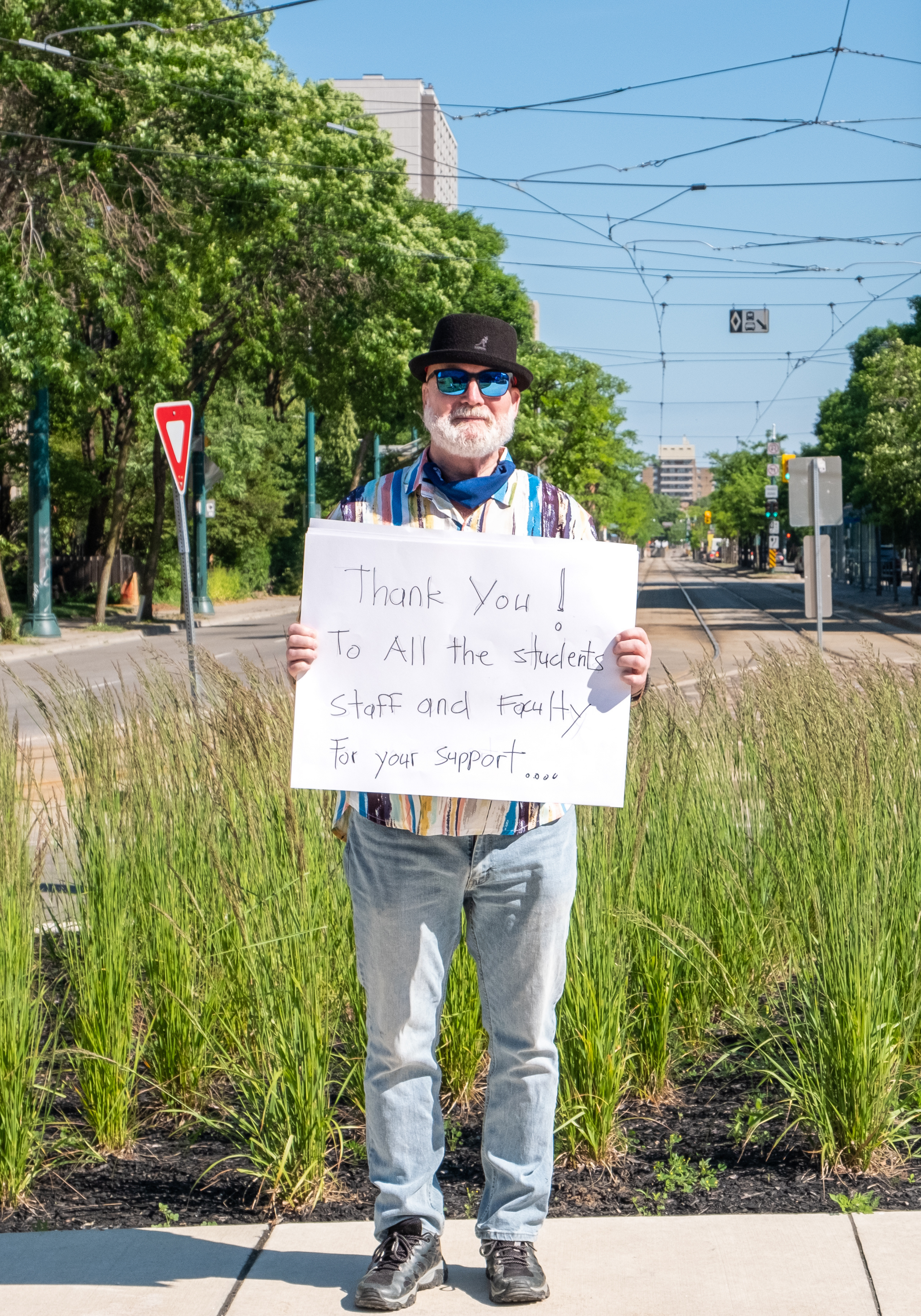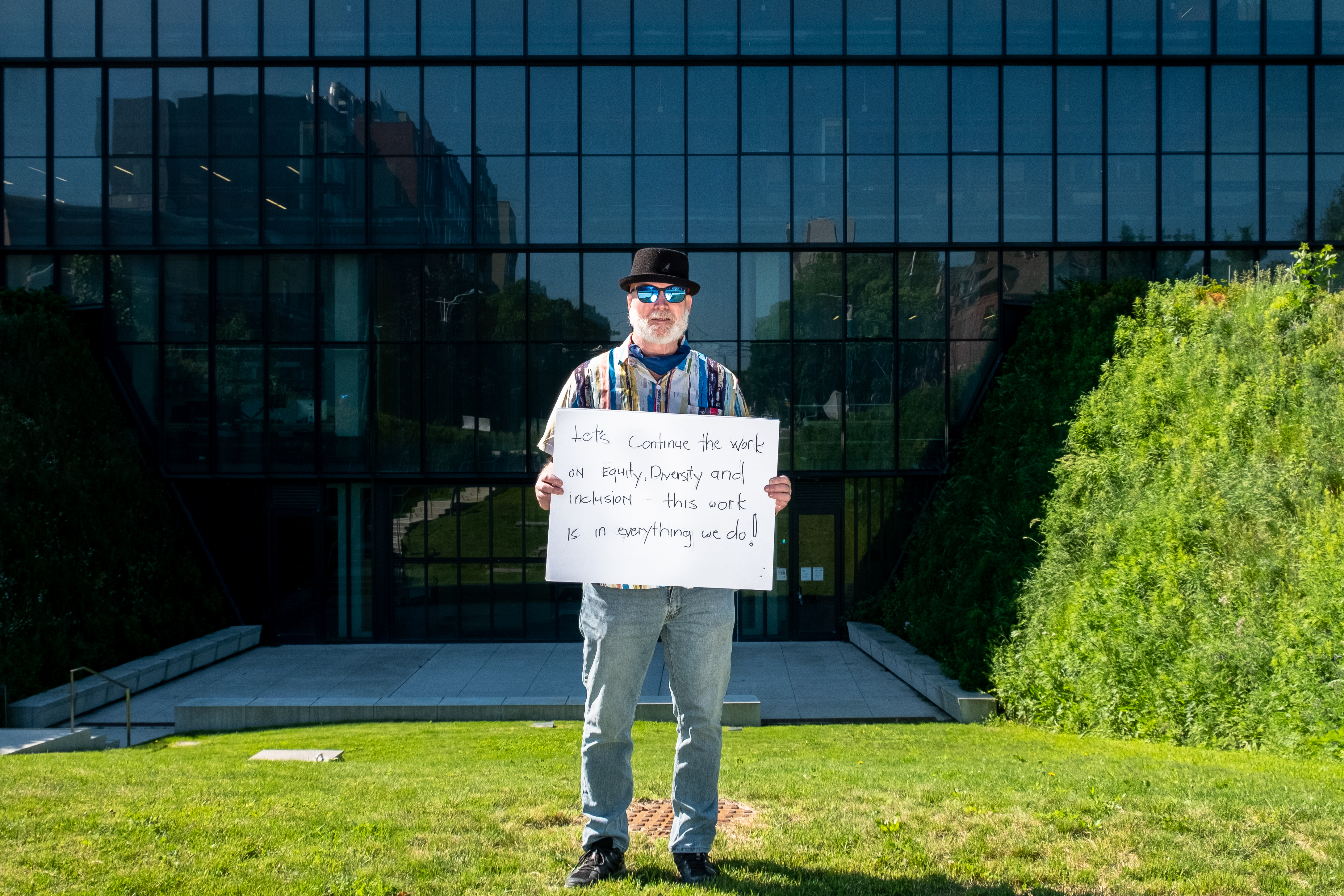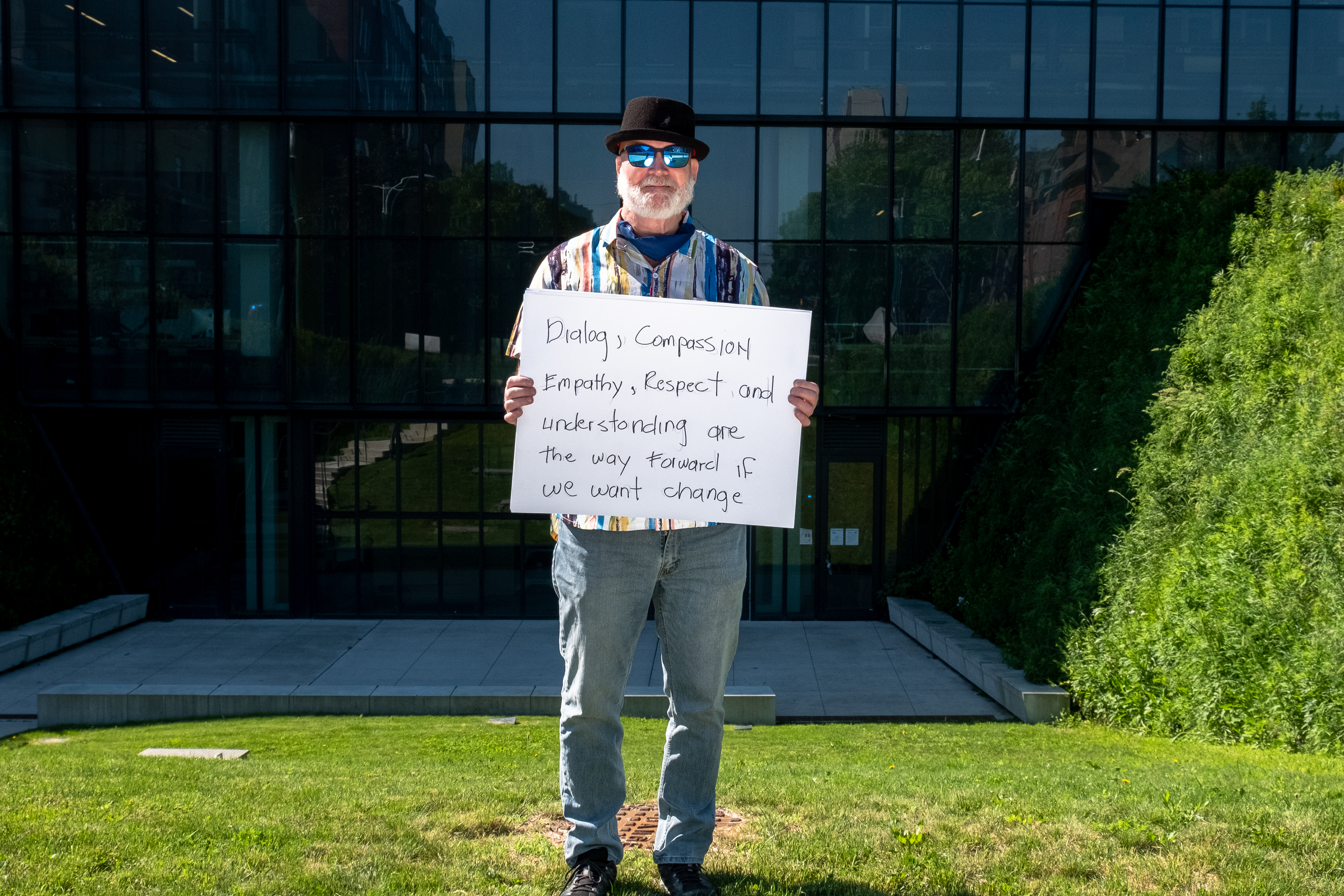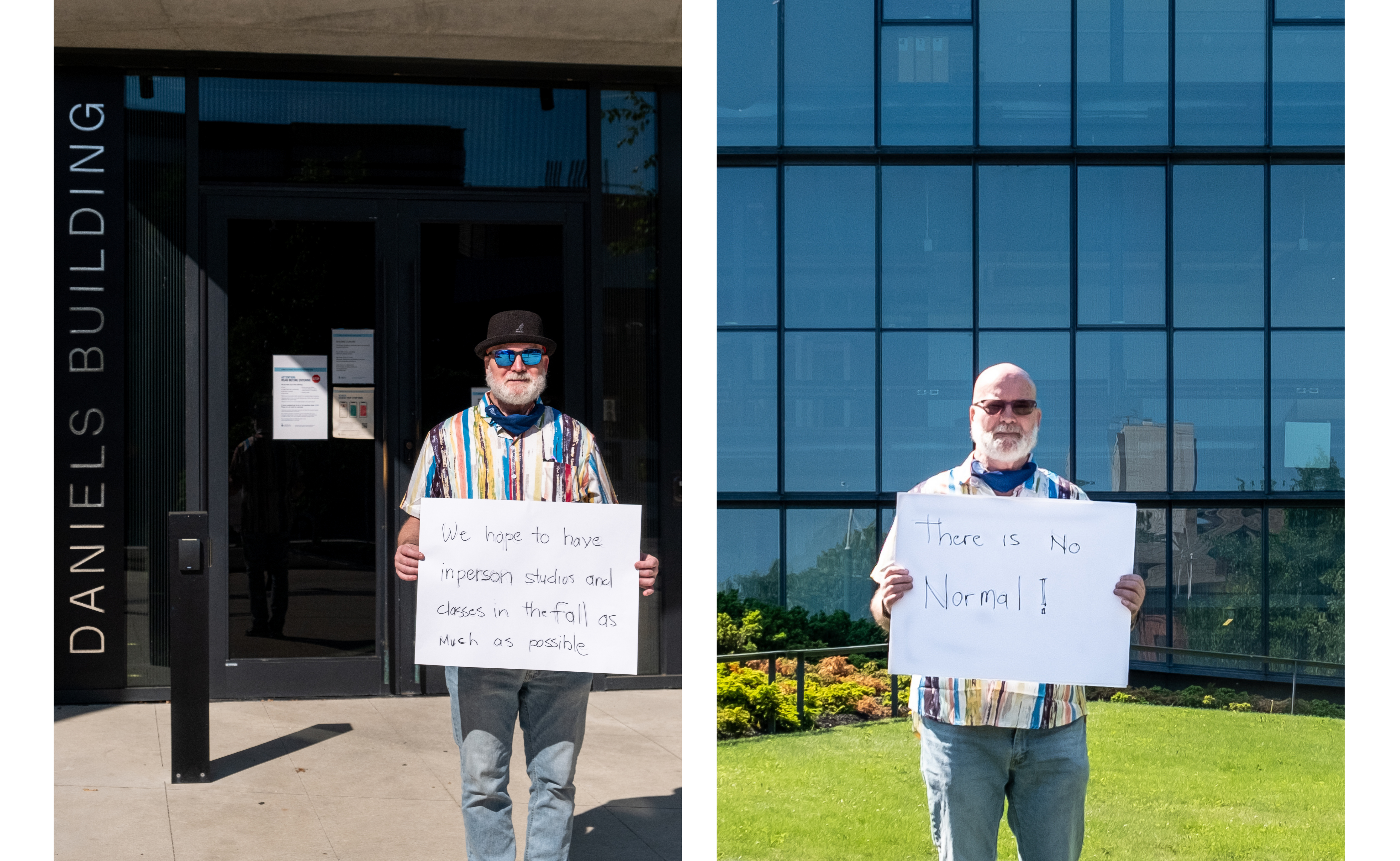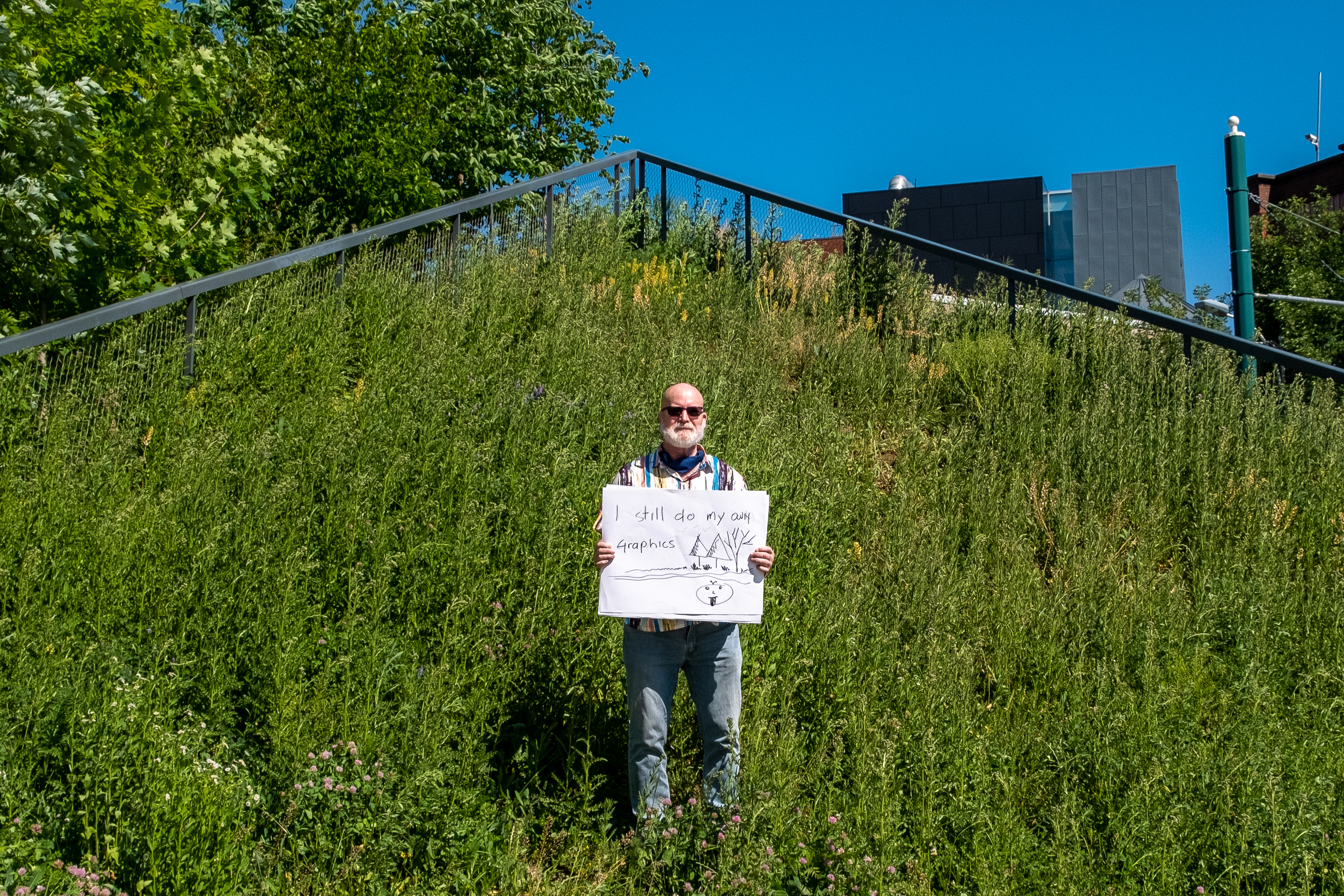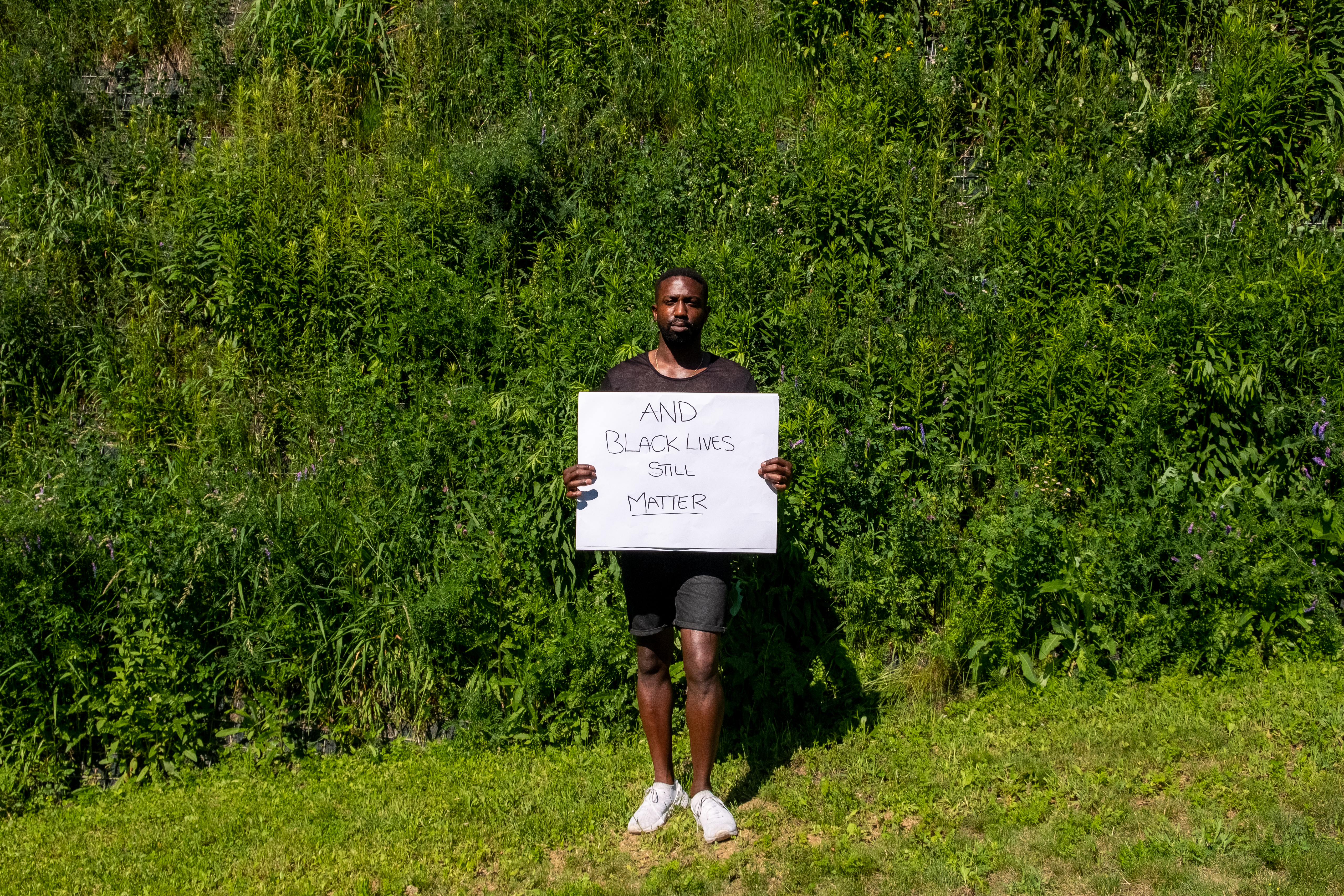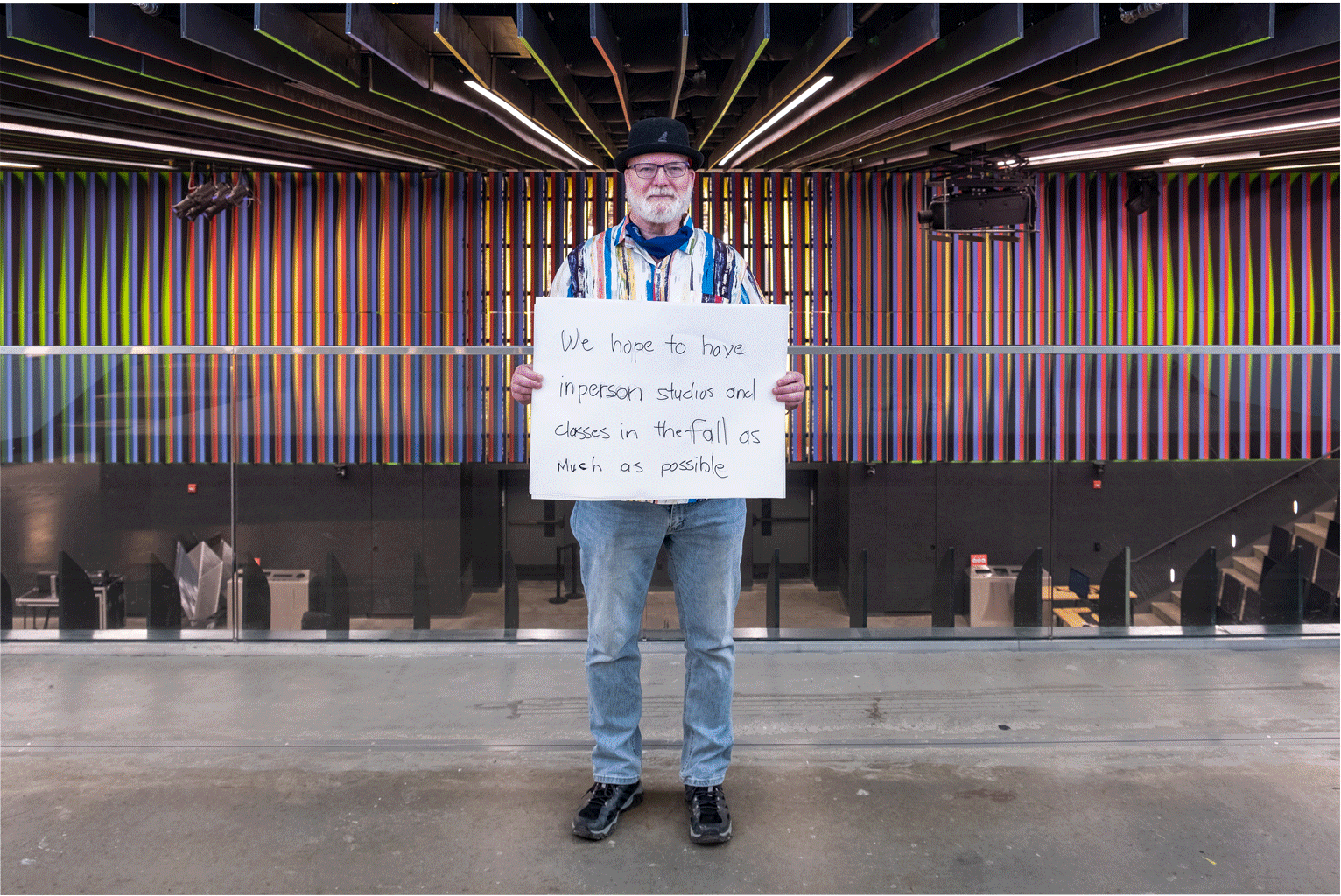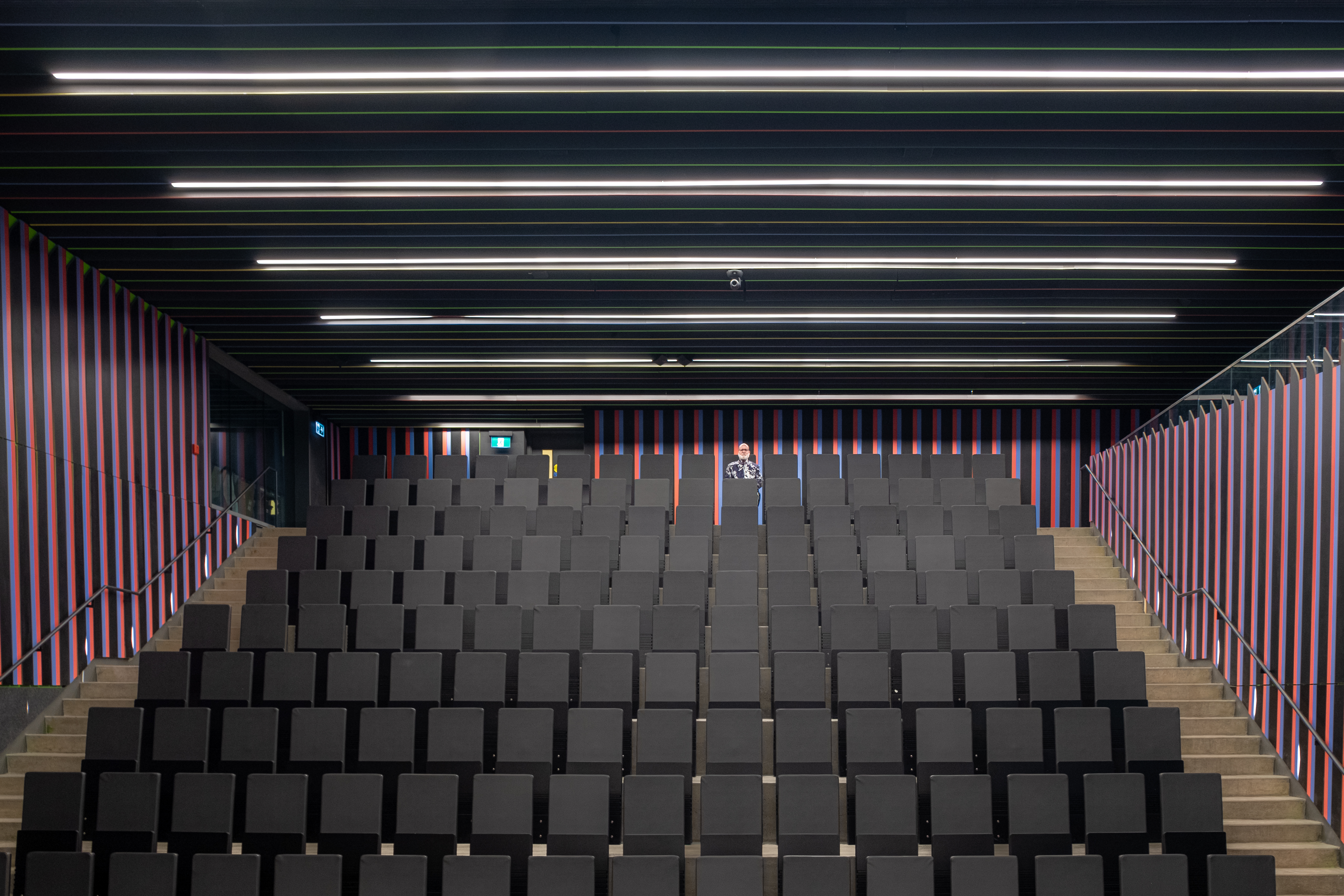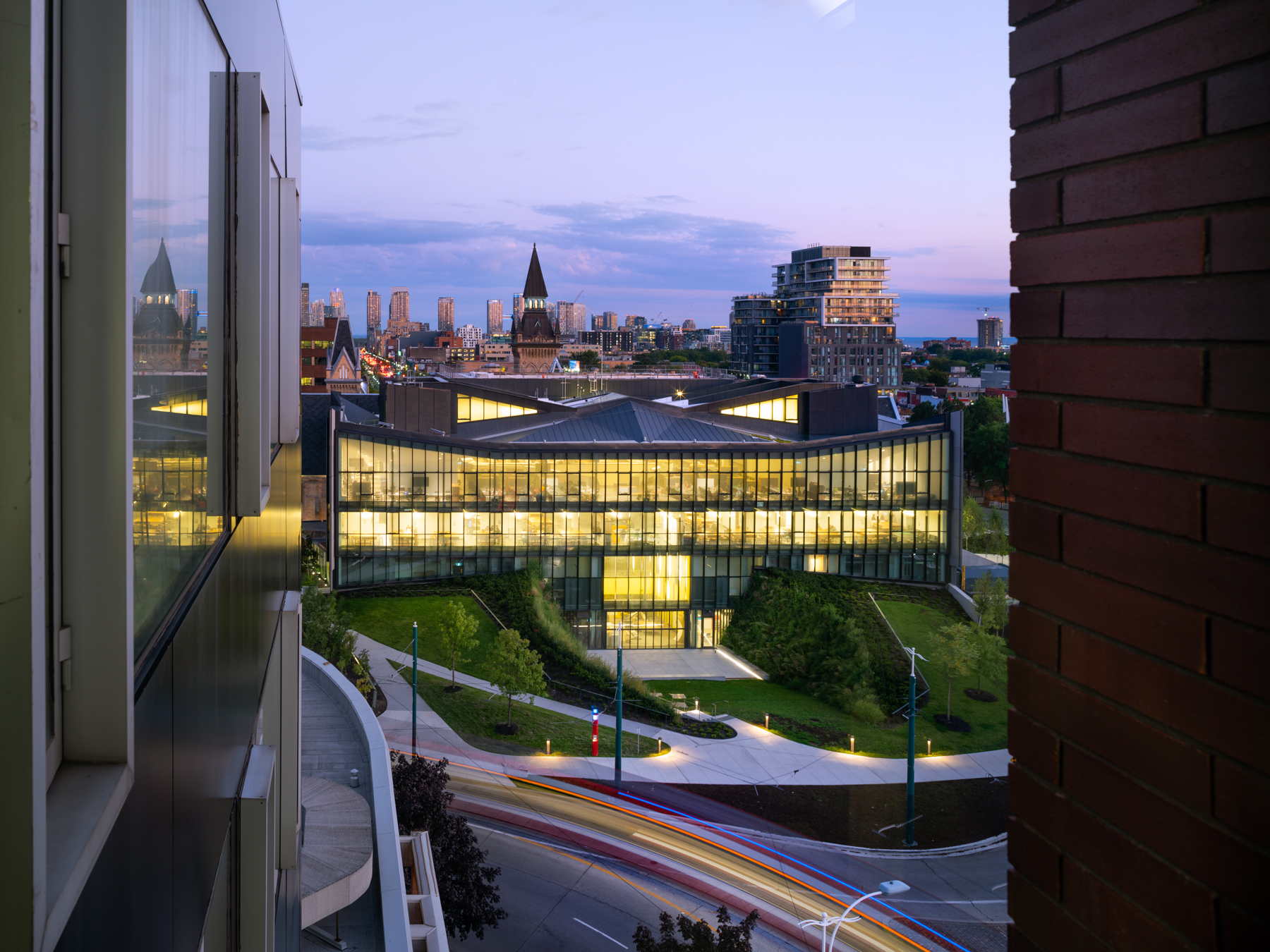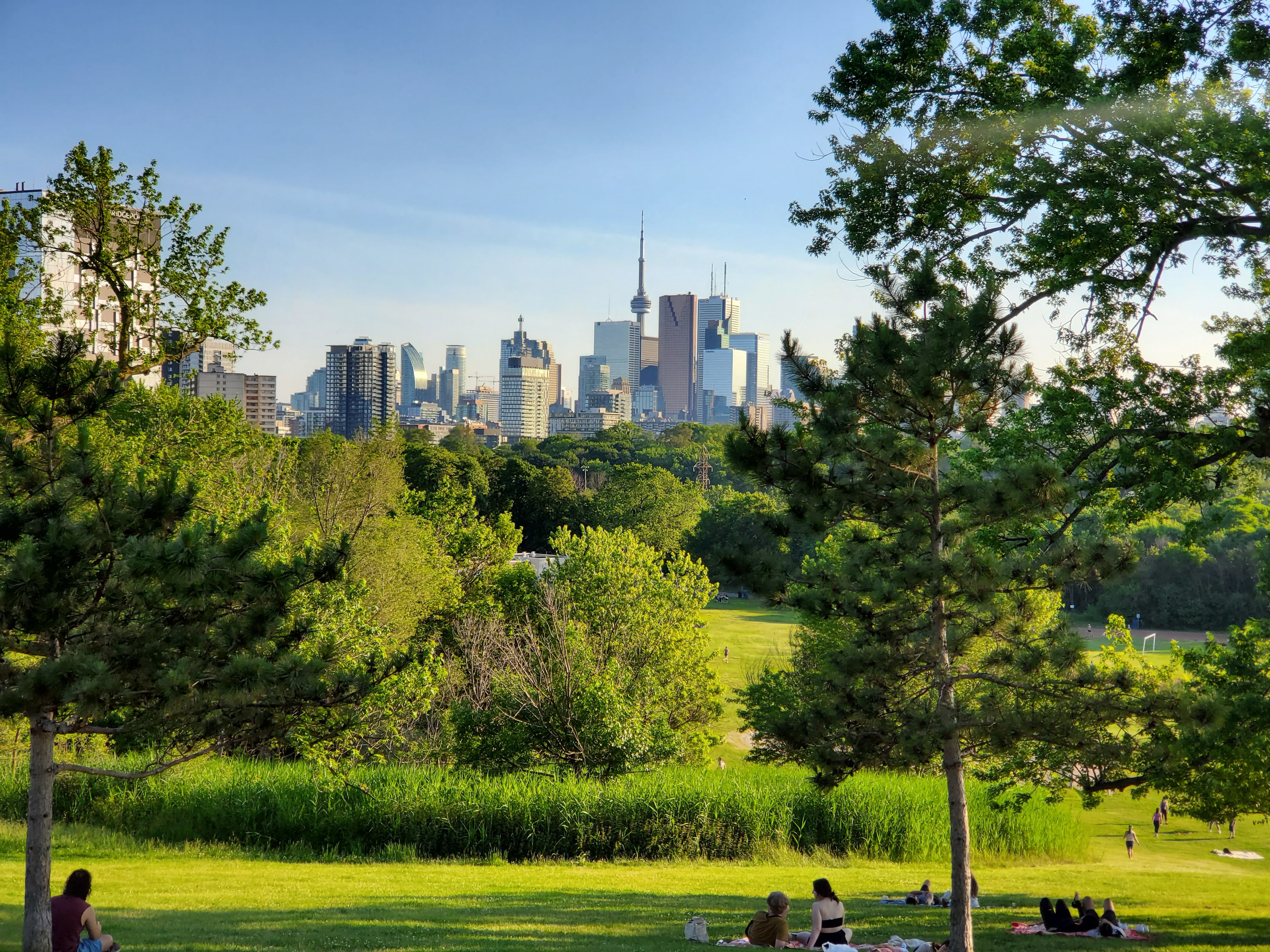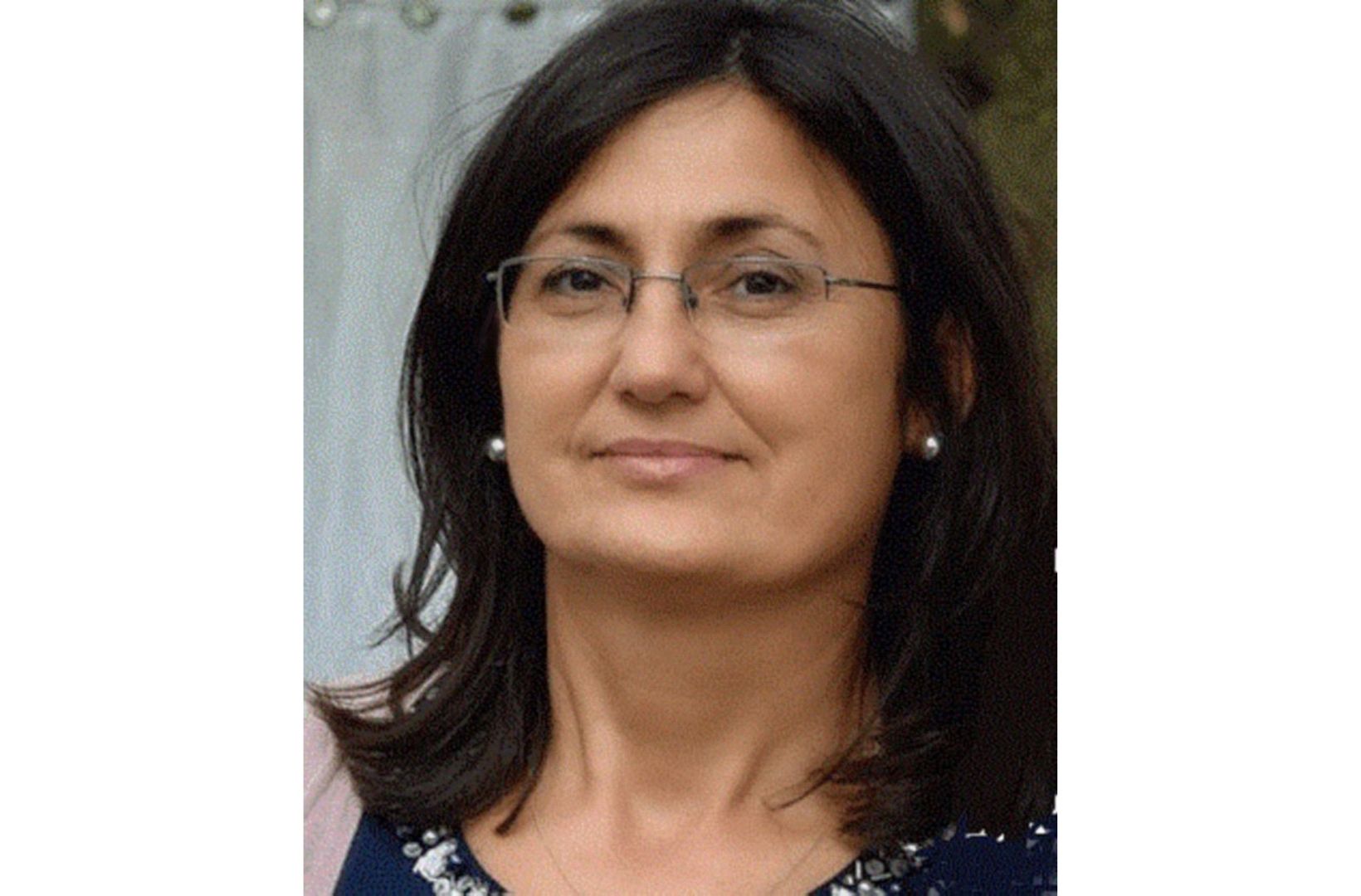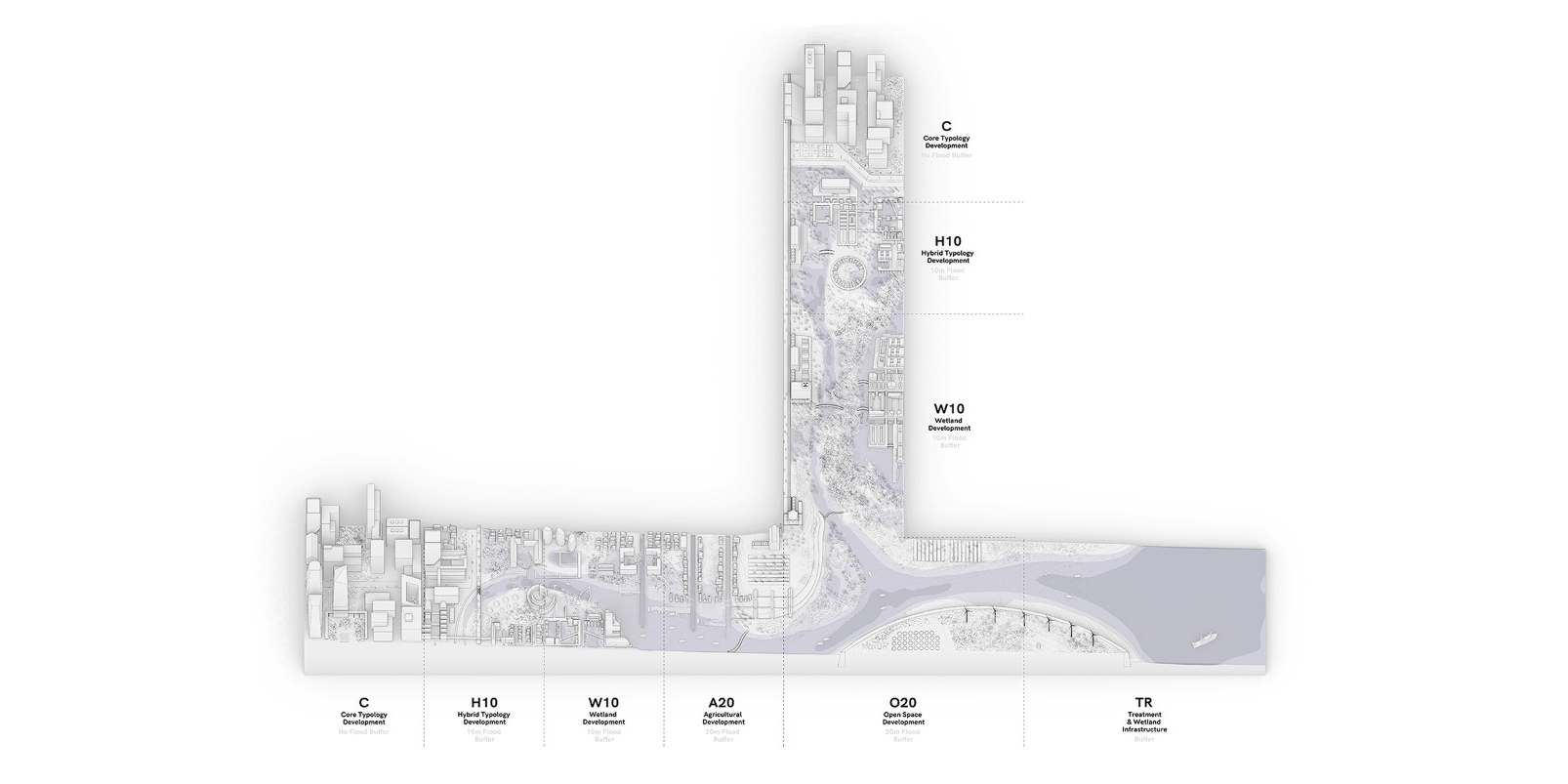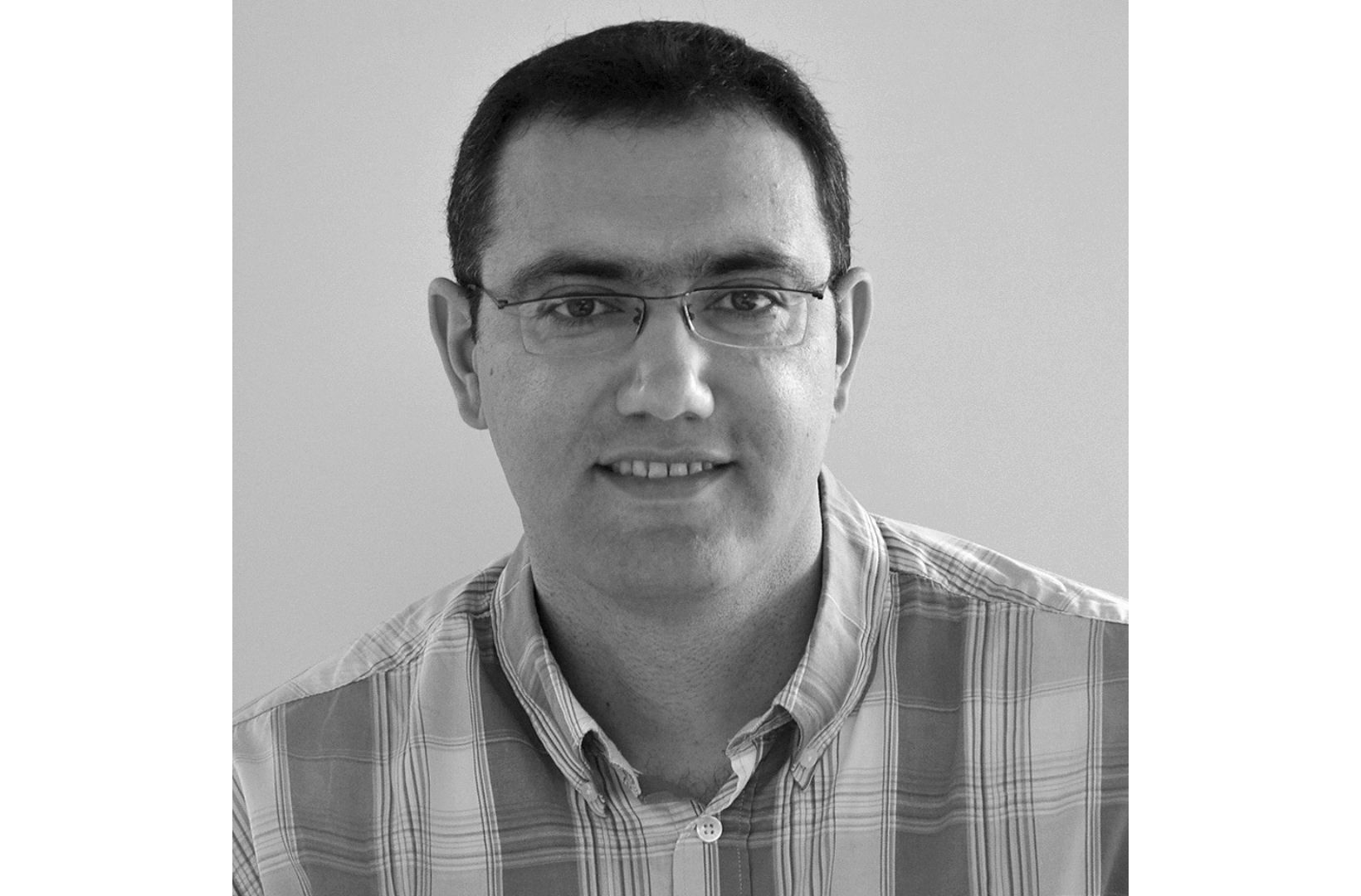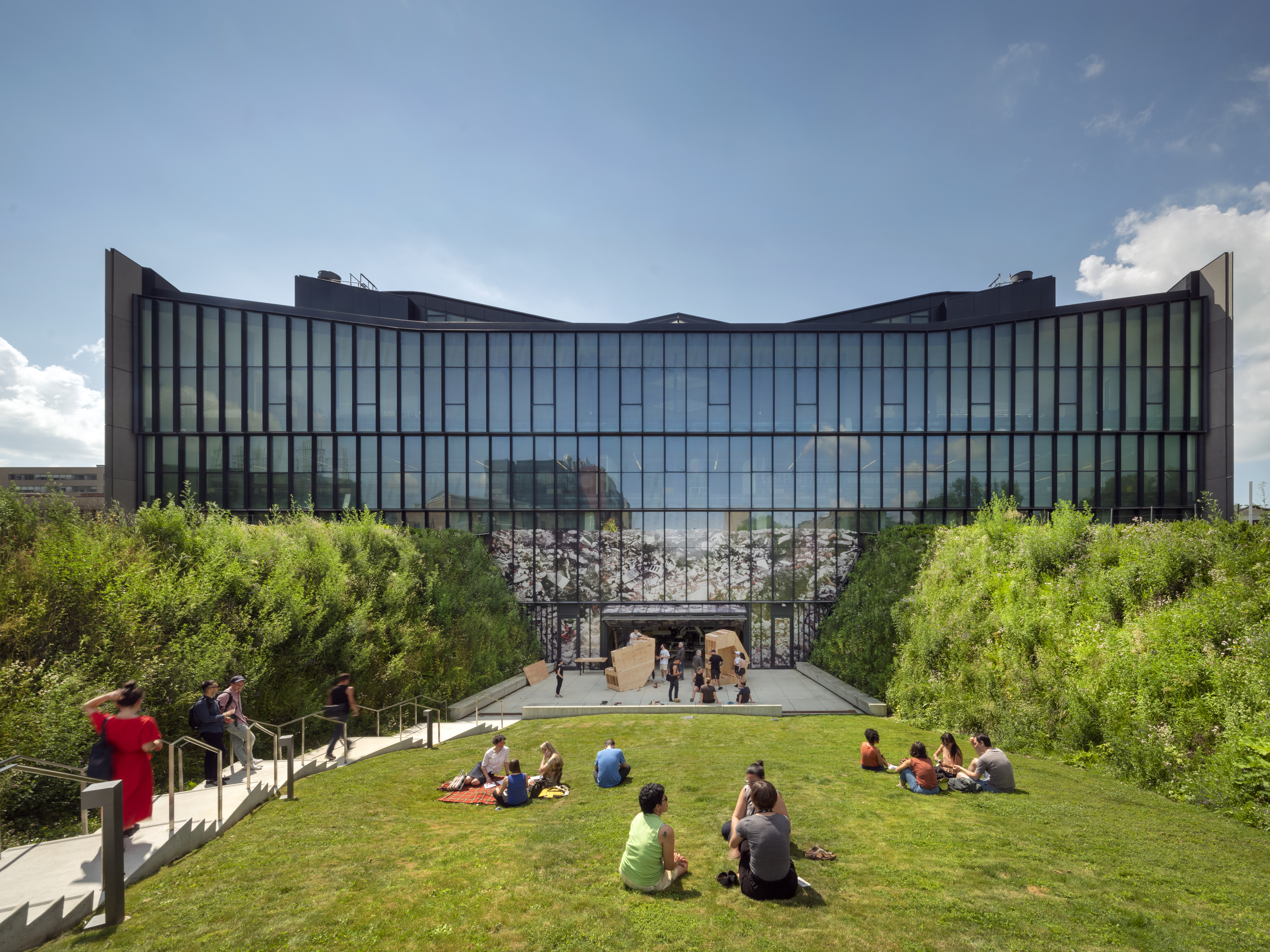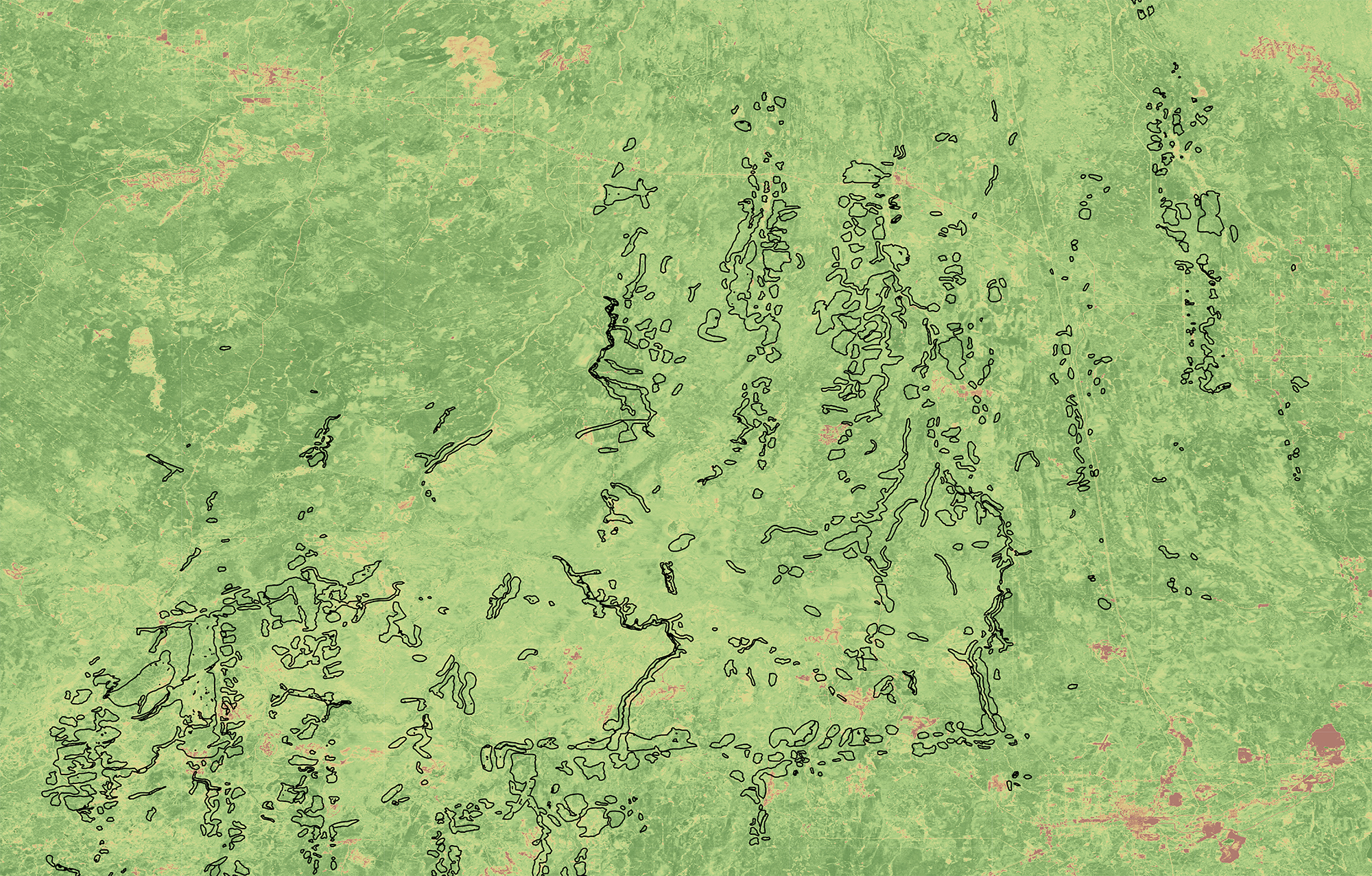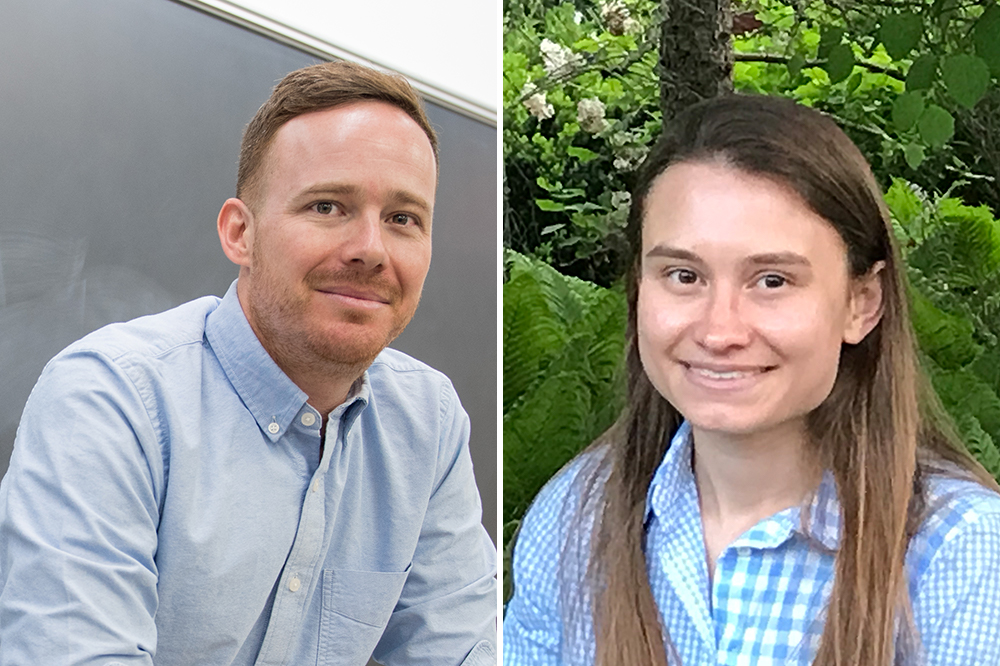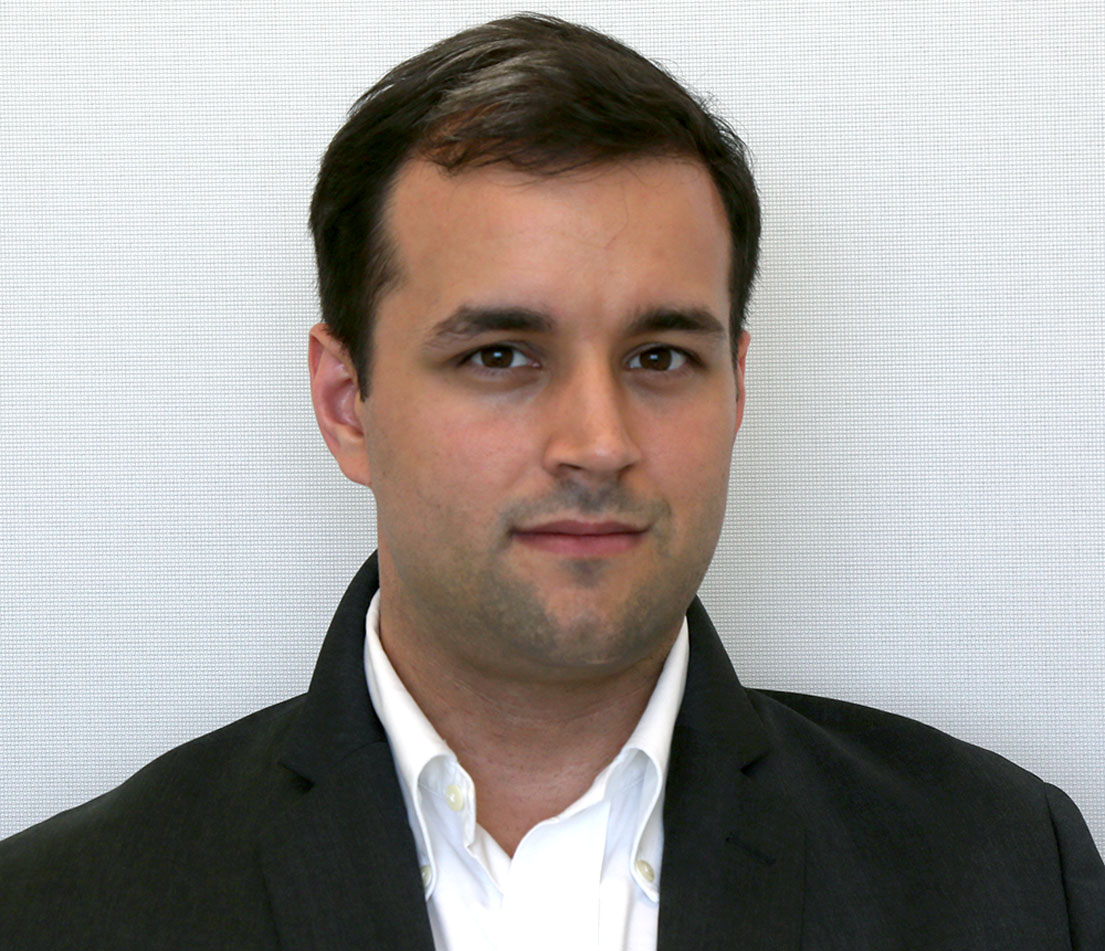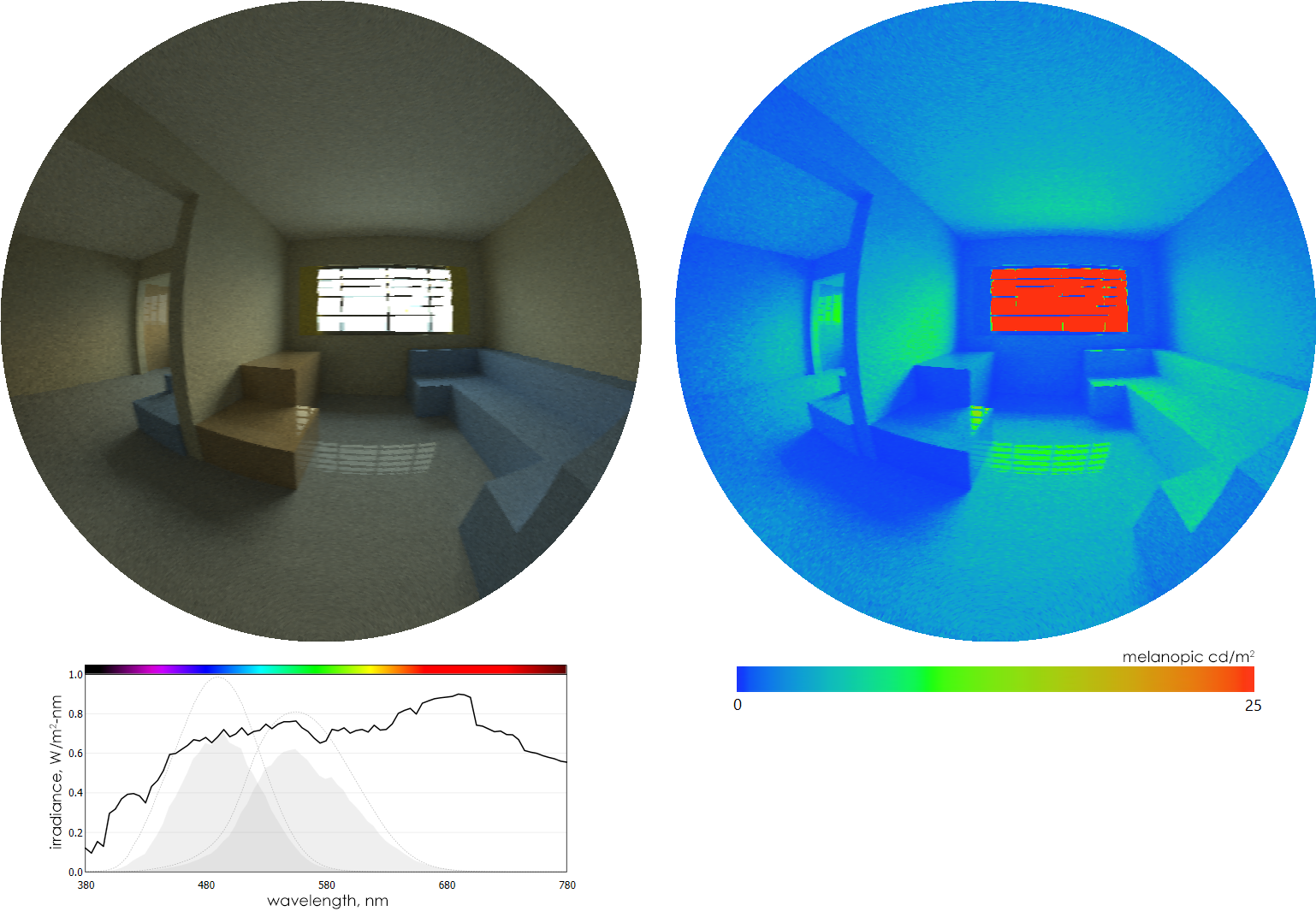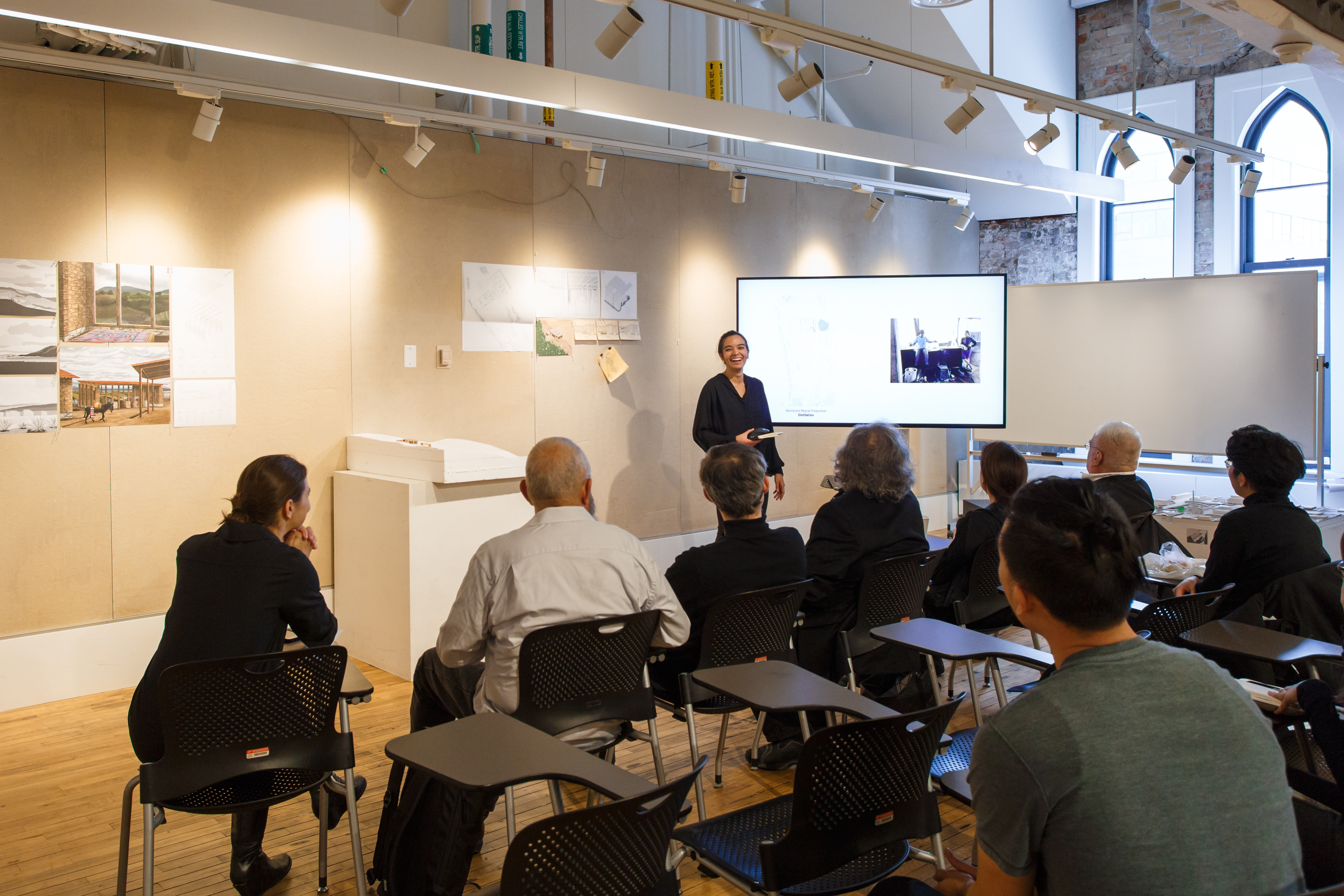23.06.21 - Q&A: RAIC Gold Medal winner Brigitte Shim on teaching, experimentation, and cross-disciplinary design
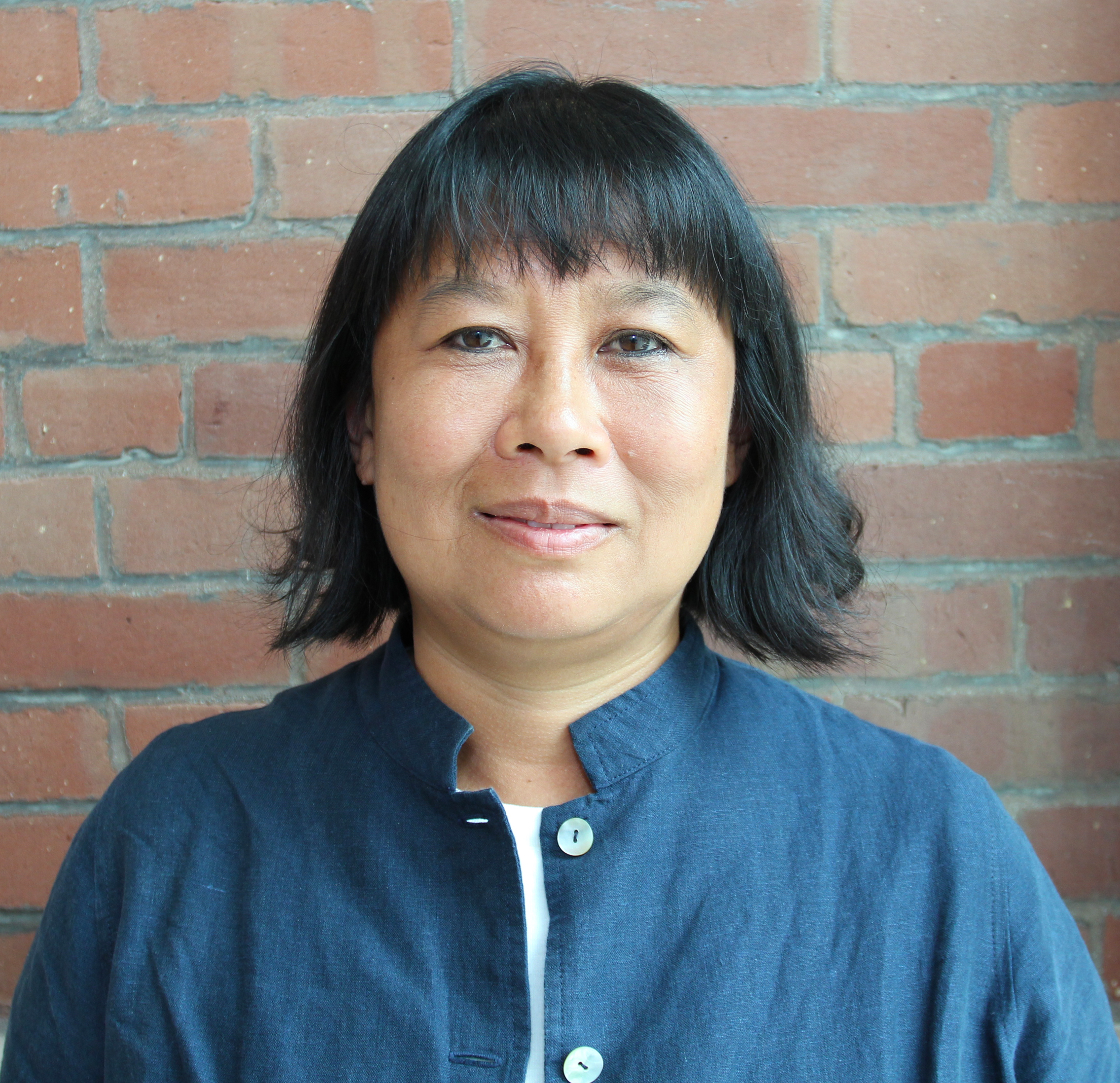
On the occasion of winning the Royal Architectural Institute of Canada’s Gold Medal with her partner, Howard Sutcliffe, Professor Brigitte Shim took the time for a virtual interview to reflect on her 33 years of teaching at the Daniels Faculty.
You have been teaching at the Daniels Faculty at the University of Toronto since 1988. Why is teaching so important to you?
Educating the next generation of architects is essential to fostering design excellence in Canada and to helping to guide the future of our world. I see teaching as a form of design advocacy: part of permeating, contributing and being deeply invested in what really matters.
The Daniels Faculty fosters an environment of tremendous reciprocity: The Faculty is comprised of esteemed colleagues who feel equally serious about this commitment to the future of the profession and students who draw on diverse backgrounds, cultures and perspectives. Together we all invest a tremendous amount of our time, energy and optimism into our undergraduate and graduate students sharing our knowledge and experiences with them.
How do you determine the topics of your studios?
My studios always addressed pressing themes, and are often taught in collaboration with other architects, landscape architects, urban planners, artists, and academics to cultivate rich, cross-disciplinary perspectives. With each new studio, I try to seek out themes that are not just exercises, but rather opportunities to explore and test issues that are fundamentally shaping the future of cities and the broader environment.
We aim to empower our students to not only discover these themes, but to develop a different reading of the city and to think about how they can shape better futures. Take for example: advancing the intensification of Toronto laneways, building for northern climates, rethinking community-based healthcare, interrogating the challenge of contested and sacred sites, and more recently, the role of places of production linking our forests to factories – to name just a few.
How would you encourage new students to approach experimentation and invention in the design process?
The work that my students undertake while in architecture school must push the boundaries and rethink the possibilities of design to reshape the built environment. Through collaboration, exploration, and experimentation there will be invention and discovery.
Are there particular lessons from your time in university that have proven resonant as you have moved through your career?
As a young architecture student, seeing built work in person enabled me to experience different kinds of spaces and to understand the importance of landscape and context. The many field trips to visit buildings while in architecture school at the University of Waterloo had a huge impact on my understanding of architecture’s potential.
Subsequently, as a faculty member at the University of Toronto’s Faculty of Architecture, Landscape, and Design, I led many field trips to give Daniels students the same opportunities to see buildings and their landscapes. These travels have helped my students to develop a deep respect for, and understanding of, the physicality of architecture, landscape, and to understand the importance of site and context.
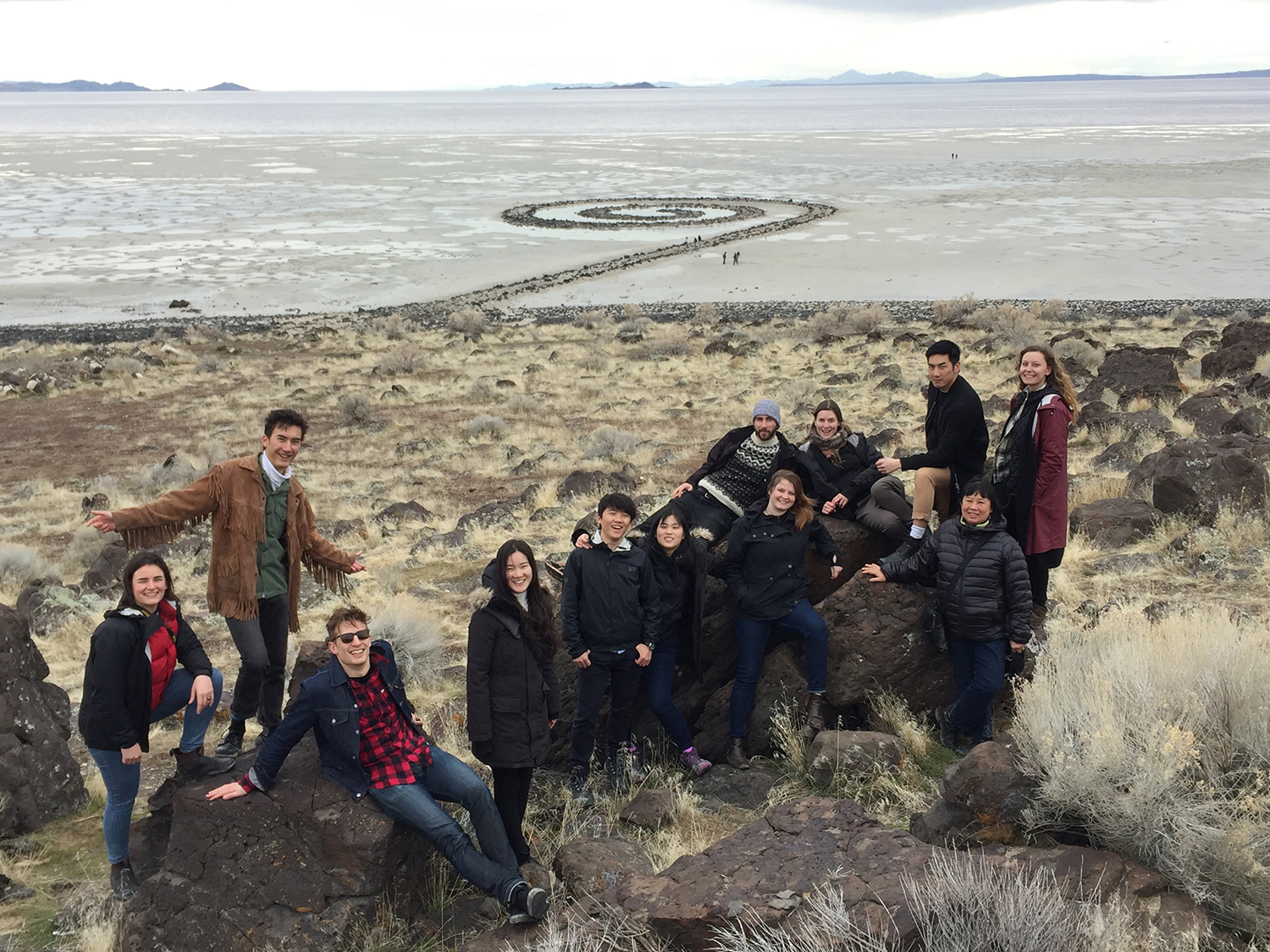
Brigitte Shim and a group of students visit Robert Smithson's earthwork "Spiral Jetty" (1970) during a reading week trip to Utah in 2017.
Your studio, Shim-Sutcliffe Architects Inc. is recognized for uniting architecture and landscape; and for its experimentations — of materiality, craft and light. What do you think a student should understand about these themes?
Howard and I regard our practice as a part of a broader conversation about making, feeling, learning, expressing, and cultivating responsible stewardship. Each project, regardless of its scale or budget, is part of this continuum. The process is as important as the outcome. Clients and craftspeople are also friends and teachers, helping us to find great pleasure in making things. We see through drawing and model-making. There’s irrational intent behind the movement of the pencil. Drawing allows us to see and explore possibilities – it literally enables us to see.
Building buildings is a physical act. To realize architecture, we are reliant on materiality, craft, and light. Our designs develop from ideas that are rooted in materials and the landscape. We assemble materials such as brick, steel, glass, wood, and concrete and ask them to speak eloquently about who we are and what we value. This notion of connecting ideas, craft, production, materials, architecture, landscape, and the participation of clients and craftspeople is important for creating meaningful places.
And finally, do you have any other advice for current students before they enter their professional life?
I believe that the perceived boundaries between the disciplines of architecture, landscape and urban design, visual art and forestry are false. The best thing about being a student at the Daniels Faculty is that you are under one big roof with engaged students in all these disciplines. Each student must take advantage of this opportunity to discover the disciplines and the very interesting territories in-between.


